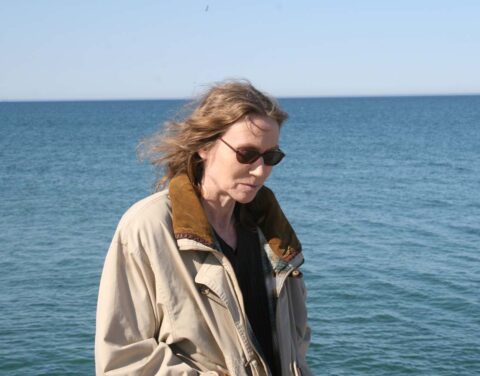So many of the details in “Class Reunion” are about what isn’t known: that you were the one everyone thought was close with the missing classmate, how they had gone missing, but nobody knew what had happened, etc. Do you think there is something inherent in a reunion that creates an environment of “confused familiarity” where people reconnect with past versions of themselves and grasp to articulate who they are?
I think there is some of that at work, walking into a room and suddenly finding yourself surrounded by classmates who have become older versions of themselves. The nature vs. nurture element of it all, that which the social scientist can track, but also that other realm experience, the who am I, who do I haunt relationship stated at the beginning of André Breton’s Nadja or, for me in the writing of “Class Reunion,” who haunts you.
How did you decide upon the framework of this story, the effect of a conversation with a group of people at a reunion who collectively think of the narrator in a certain way which prompts a response from them where they try to articulate what they do and don’t know and in some ways correct what feels like an essential misunderstanding?
For years I had planned to fold the story into a larger work in progress, along with several parallel narratives, hoping to find a place for it in fiction. But the story is nonfiction, and asked for a greater level of care, understanding and awareness. Perhaps this is a way of striving for an expansiveness beyond the self, beyond what the self alone can know.
One of the most interesting details in the story is how the song “In-A-Gadda-Da-Vida” personifies the lost classmate and becomes one of those songs we all have which so powerfully evokes someone from our past. Can you talk about the choice to use this song?
The details demanded to be true, and those details turned over in my mind for years, layers of meaning already in place, waiting to be written in a narrative. Love is big. No one invented it, no one has a monopoly on it. Everyone needs it, deserves it.
Violence looms over the story and is made vivid by details like the rubber band in the class photo, the blood-like spattering of spaghetti in the memory from class, and the bag over the head of the lost classmate. What do you think this intentional layering of violence connects with the lost classmate who was “marked” for this fate?
How to understand it but to have seen it happen, the youthful joy of life slowly overtaken, how often are we witness to it, individually, collectively, watching the turn, the hardened figure walking an uncertain path, looking over their shoulder in pain and fear. Is there something we could have done, would have done, if only we weren’t struggling to hold our own fine balance point.
During a flash workshop on illness and relationships run by April Bradley during SmokeLong Summer I recognized the importance of the yet unwritten story’s mental health component. The story quickly came into narrative form. I glanced briefly at all the pages of notes I’d already made over the years, then closed the file and started typing notes into a separate draft, words that turned into lines that connected into a single continuous address to the lost friend, and, as if in answer to my seeking the truth of what had happened, arrived at the story itself.
The ending is both vivid and brutal. For such a compact piece, it delivers a powerful gut punch. How did you arrive at this ending?
The speculation is that my classmate had been a victim in a drug deal that turned violent. The case is still unsolved, as far as I know. The mournful ‘but what did I know’ from the story. We know. Knowing is an end, as it is also a beginning, however often too late to be of help.
We have an uneasy relationship with the dead. They owe us, we owe them, but only the living can make amends.



 The core workshop of SmokeLong Fitness is all in writing, so you can take part from anywhere at anytime. We are excited about creating a supportive, consistent and structured environment for flash writers to work on their craft in a community. We are thrilled and proud to say that our workshop participants have won, placed, or been listed in every major flash competition. Community works.
The core workshop of SmokeLong Fitness is all in writing, so you can take part from anywhere at anytime. We are excited about creating a supportive, consistent and structured environment for flash writers to work on their craft in a community. We are thrilled and proud to say that our workshop participants have won, placed, or been listed in every major flash competition. Community works.